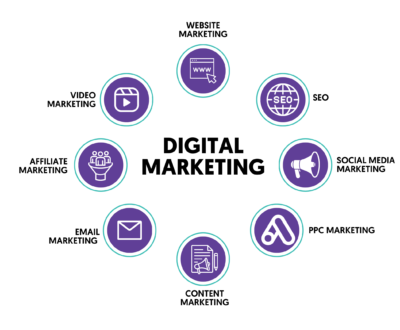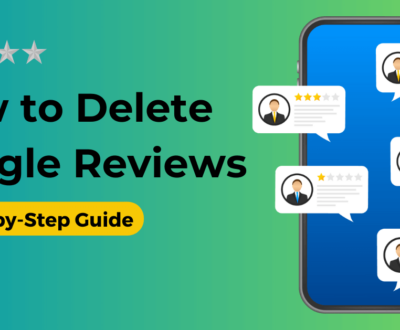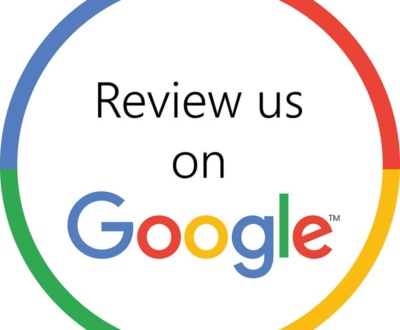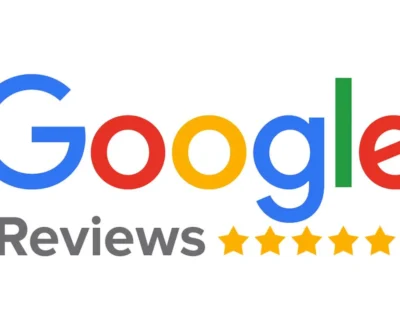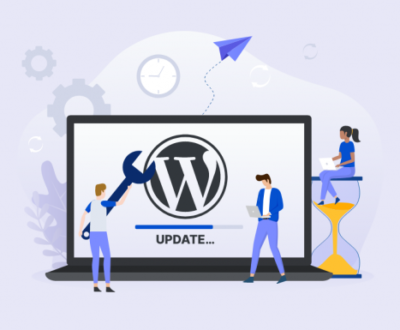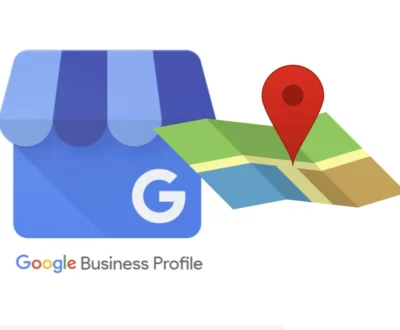The Ultimate List of Marketing Strategies for Small Businesses
- December 7, 2022
- Business Management, Digital Marketing, Inbound Sales, Lead Generation, Outbound Sales, Sales
Do you have a great product or service with great clients that are happy with your services? You now want to scale the business and are looking for Marketing Strategies to help you grow your business.
Marketing strategy and planning set the foundation for everything you do. Doing it right enables you to focus your time and budget on the right marketing mix of programs to reach your marketing goals.
A marketing strategy is also how as a small and medium business you can compete with larger companies.
Your marketing strategy outlines the why and the what:
- why you’re in business
- what you want to achieve.
It sets out your long-term marketing approach.
Your marketing plan describes the how and the when. It:
- is the tactical roadmap to make your strategy happen
- describes your short-term marketing initiatives in the current year.
Having a clear marketing strategy and plan delivers significant benefits for your business. It will help to:
- keep your online marketing efforts focused
- connect with the right potential customers
- make the most of your investment
- measure and improve your results.
There Is No Magic Marketing Strategy
There is no magic bullet.
The goal of marketing is to connect your business’ value to the right customer base. It’s a simple concept but it can take on a million different shades.
- What demographics make up your customer base?
- Where do they live?
- Where do they hang out online?
- How do they look for products in your niche?
- Who do the listen when making decisions relative to your product?
The answers to these questions determine which marketing strategies will be viable and which will be a waste of time.
In other words, the key to success for your business is not Facebook Ads.
It’s not SEO.
It’s not conference networking.
There is no magic, universal strategy that will revolutionize your business. I have literally no clue what will work for you because I don’t know you. I don’t know your business. I don’t know your customers.
But fortunately, you DO know your business! You DO know your customer base!
And after reading this guide, you will have an expanded awareness of viable marketing channels, any of which could hold the key to your future growth.
Develop your marketing strategy in 6 steps
Know your Market
Know your market
Start by capturing insights about your industry and customers.
Market research is an essential part of your marketing strategy. It:
- involves gathering and analysing information about your customers and industry, such as size, growth and trends
- helps you to know more about your customers and the current and future demand for your products and services.
There are 3 main ways to do research:
- desktop research—accessing existing information that is readily available online from credible sources
- quantitative research—using questionnaires to get responses from a specific audience and interpreting the data
- qualitative research—using interviews, discussions or focus groups to explore themes in more detail.
You can do the research yourself or hire an external agency to carry out the research. Find out more about researching your market.
Know your business
Next, you need an honest appraisal of your business from an internal perspective.
A SWOT analysis can be a useful way to assess where you stand in your market relative to competitors. It highlights the major obstacles and business drivers and provides the direction necessary to:
- build on strengths (S)
- minimize weaknesses (W)
- seize opportunities (O)
- counteract threats (T).
This diagnostic tool can help you uncover foundational insights to guide your marketing strategy.
Set your Marketing Objectives
Based on your business plan and business goals, the next step will be to define marketing objectives that are:
- clear
- realistic
- measurable.
These objectives will typically have a financial or communication focus and may cover different areas, such as:
- building brand awareness
- shifting customer perception
- generating business leads
- increasing sales volume
- improving customer retention
- boosting customer satisfaction.
It’s important to be as clear as possible so you can effectively measure the outcomes. Make sure that each of your marketing objectives meets the SMART criteria:
- Specific—state clearly what you want to achieve.
- Measurable—you must be able to measure and monitor your results and progress.
- Achievable—take your skills and resources into account.
- Relevant—focus on areas that will improve your business.
- Time-bound—set a timeframe to achieve the outcomes.
To measure and report your progress toward your inbound marketing objectives, you should identify and define key performance indicators (KPIs). These KPIs are quantifiable metrics (indicators that can be measured) that are meaningful for your business, such as:
- cost per acquisition
- customer lifetime value
- unique website visitors
- social media engagement.
You’ll know when your marketing objectives are right when they:
- motivate you and your team
- enable you to track your business performance.
Define your target customer segments
A classic and effective marketing framework is commonly known as STP:
- segmentation
- targeting
- positioning.
To become a customer-focused business, you need to find ways to get and use insights into your market.
As a starting point, summarise the findings from any customer research you’ve done. This will reveal:
- customer attitudes and behaviours in your industry
- current and future needs for products and services.
Based on this analysis, follow these steps to define your target audience:
- Choose the most appropriate way for you to segment the market (e.g. demographic, geographic, psychographic, behavioural).
- Prioritise target audience based on relevant criteria for your business (e.g. potential value, brand differentiation, ability to serve).
- Document a profile for each of your preferred target audiences and then create personas to bring these to life in a meaningful way.
Do a Competitive Analysis
Your business most likely operates in a competitive market. Customers are typically spoilt for choice. That’s why it’s essential to establish your brand positioning in a way that achieves sustainable competitive advantage.
As part of your digital marketing strategy, you should maintain a profile of your key competitors. You can:
- talk to people who might have relevant information, for example, your sales teams and business partners
- review their online presence, for example, website, social media marketing
- collect readily available marketing material and price lists
- read online ratings and reviews from their customers
- purchase products and services at their premises or online.
If you don’t know where to start, find out how to do market research.
Find information about each of your key competitors:
- products and services
- pricing model
- customer service
- supply chains
- brand difference
- marketing approach.
Use this information to help identify what sets your business apart.
- How do you meet the current needs of your customers better than the competition?
- How can you better meet the future needs of your customers?
Define your Brand Positioning
Brand positioning is much more than just your name or logo. This is your business purpose. It’s why you exist. It’s about making sure that your communications, culture, and customer experience are all working together in harmony.
The ambition is to build a distinctive brand. This is about what you want to:
- be known for
- want to own in the hearts and minds of your customers.
It will guide everything you do and don’t do.
Work through the guidelines to help build your business brand.
It’s also beneficial to define your value proposition. In simple terms, it’s a statement of the benefits you provide in exchange for payment. Think of this as a win-win for your business and your customers. It explains:
- the promise of value you will consistently deliver to customers
- how your business model meets the needs and wants of customers.
Your value proposition will look closely at the problems you are solving for customers.
Remember to look at your value proposition in terms of the current situation and the ideal future. This will help you to prioritize future improvements.
Identify Priority Types of Marketing Strategies
You can identify your high-priority marketing programs based on your:
- marketing objectives
- target segments
- brand positioning
- competitive analysis.
Think about these as your strategic themes.
For example, imagine you’re running an innovative online store. Based on your analysis of the current situation and assessment of future opportunities, you might identify 4 marketing programs you need to drive growth:
- review and relaunch the brand
- increase new ideal customer acquisition
- grow value through cross-selling or upselling
- boost customer loyalty and advocacy.
These work packages will then direct your marketing actions and determine where you’ll focus your marketing efforts. Be focused and consistent. If you’re doing something outside of these themes, ask yourself why.
Marketing Strategies Tips & Tricks
We have listed and explained highly effective marketing strategies that the greatest brands have used to improve their bottom line.
We have also shared easy tips for you to execute these marketing strategies for your business.
These marketing tactics really just speak to the fundamentals of good human relationships and factor in the latest technological aids for marketing your brand.
All small businesses want a low-budget marketing plan as they generally have a low marketing budget. The problem, however, is determining which of the successful small business marketing strategies offer the highest ROI.
That’s why we are sharing a list of high-ROI marketing strategies that you can and should steal from the industry today.
Build Your Influence
The most successful marketing campaigns help you achieve the highest ROI. Once you build your influence, you can use many more powerful marketing strategies.
With influencer marketing delivering ROI as high as $6.50 for every $1 spent, it’s quickly become one of the most effective marketing strategies for a small business.
This explains why influencers are finding their way into many social media promotional strategies used by small businesses.
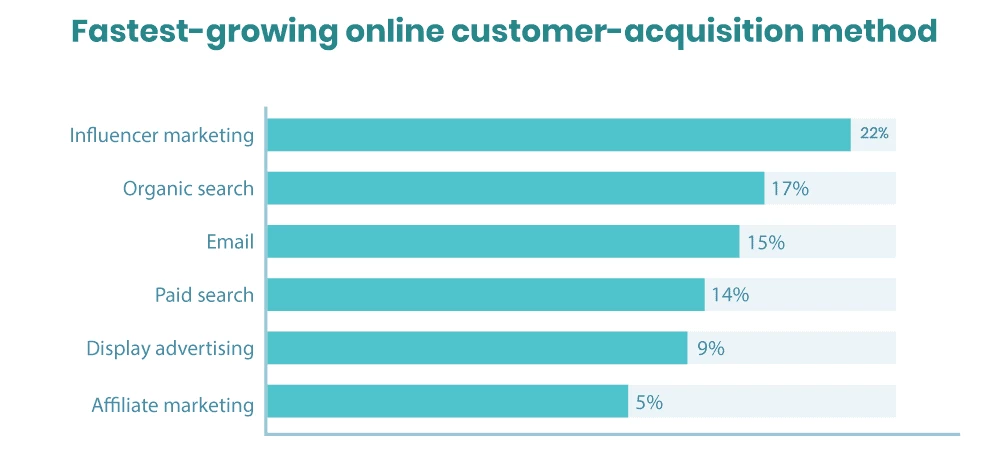
To create a successful influencer marketing campaign, Entrepreneur contributor Murray Newlands recommends the following steps:
- Select your KPIs
- Focus on the social media channels where your target market is most present
- Find a credible influencer
- Plan your publishing schedule
- Consistently improve and measure your outcomes
Leveraging Employees as Thought Leaders
Alternatively, you could always create influencers from your own employees. Often referred to as thought leadership, social selling and employee advocacy are becoming more popular with companies who want to amplify their brand message.
Going beyond simply resharing corporate posts, employee advocacy allows each one of your employees to become brand ambassadors and social sellers, sharing the types of content content that makes the most sense for their individual industries while promoting your company.
In fact, according to LinkedIn, Salespeople who are using social media campaigns to sell are 51% more likely to hit their sales quotas over their less socially savvy peers—and they would know. LinkedIn was responsible for nearly 95% of conversions coming from employee advocacy posts in 2022.
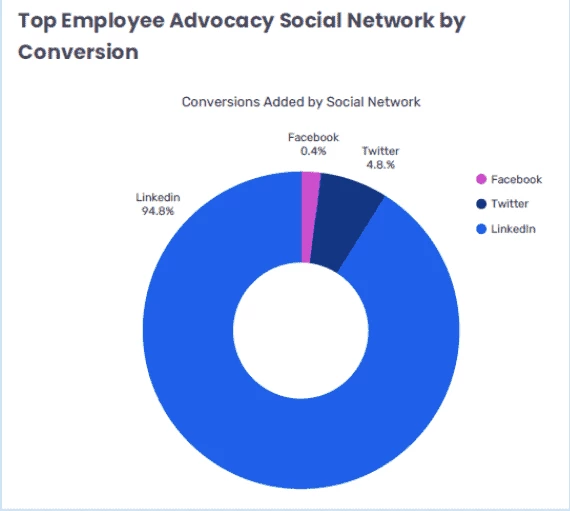
Champion One Social Channel
With the undeniable potential of social media marketing as a small business digital marketing strategy, it can be tempting to try and find success on as many social platforms as possible.
But, as marketing guru Neil Patel tells us, it’s best to focus on one social channel at a time:
To become a champion of one social channel, the marketing team at Social Media Marketo recommends a 12-step process:
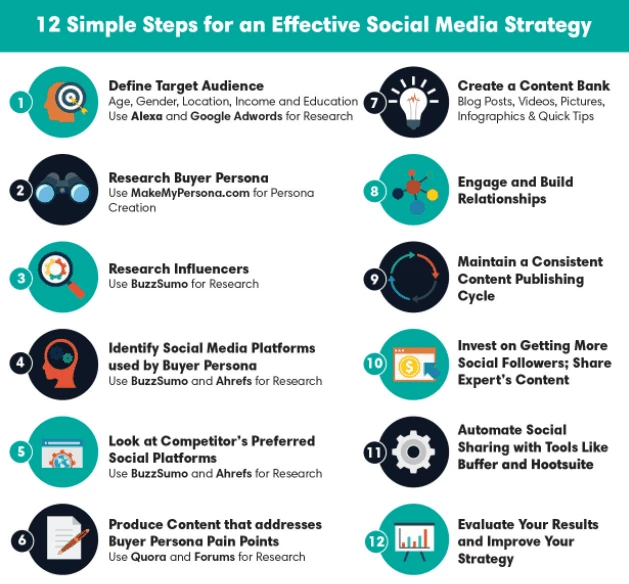
Build Rapport through Email
With 59% of marketers claiming that email is their most effective marketing channel for revenue generation, this is one strategy that you don’t want to ignore.
If you haven’t started building your email list, Social Triggers founder Derek Halpern recommends a few tips for getting started:
- Create a long-term content strategy to drive organic traffic to your website
- Create multiple opt-in offers
- Utilize an email list popup form to collect email addresses
- Add a banner with an invitation to subscribe to your email list to your business signature.
You can use tools like Designhill email signature generator to create a professional email sign-off with links, banners, and call-to-actions.
For more details, check out this article on how to get more results from every email you send.
Blog Strategically
When done correctly, starting a blog is one of the absolute best ways to drive targeted traffic to your website.
In fact, marketers that effectively utilize blog posts tend to get 67% more leads than those that do not. But that’s only if you’re doing it right.
To succeed with blogging, you should:
- Find your niche. Choosing a niche is one of the hardest, but most important, considerations before you start a blog.
- Focus on quality over quantity. One long-form, comprehensive post (1,500+ words) is worth 5x a brief, non-informative post.
- Develop a promotion strategy before writing. Many expert content marketers recommend spending 20% of your time on content creation and 80% on promotion when it comes to content marketing.
- Create evergreen content. When you create evergreen content (and update that content when necessary), your content assets compound their impact over time.
- Use photo editing tools like Instasize to curate your content.
- Promote your blog articles. Create a list of influencers that resonate with your product and start an outreach campaign using powerful outreach tools requesting them directly or indirectly link back or speak about your blog.
- Design is everything. The way your blog looks can either pull in or push away potential readers, so consider using professionally made templates to create your blog.
Conduct Research That Impacts Your SEO (Search Engine Optimization)
With 70-80% of modern-day consumers ignoring ads altogether, ranking for targeted keywords has never been more important.
To rank in SERPs for keywords that can drive high-quality leads, there are a few simple tips that you should follow:
- Focus on low-competition, long-tail keywords. If you own a wedding business, you’re not going to compete with David’s Bridal for the keyword “wedding dress.” Instead, you should focus your efforts on low-competition, long-tail keywords that are relevant to your audience.
- Utilize tools like SEMRush or KWFinder. While it may be tempting to use Google’s Keyword Planner, it’s been proven that they hide many low-competition keywords in an effort to increase ad spend. Tools like SEMRush and/or KWFinder make it incredibly easy to find high-ROI keywords that can drive high-quality leads to your website.
Reexamine Your Landing Pages
One small business marketing strategy that can have an immediate impact on conversions is the focus of your landing pages.
While most conversion experts are quick to recommend that you should always start your marketing campaign with a dedicated landing page, many fail to mention the importance of focusing on a single goal.
For your landing page to succeed, your focus should be on getting your readers to take a single action.
After all, if you have 20 links on your landing page, your attention ratio is 5%. With one link, that ratio is 100%.
This simple act of focusing on getting your readers to take one action on each page can do wonders for your conversion rates.
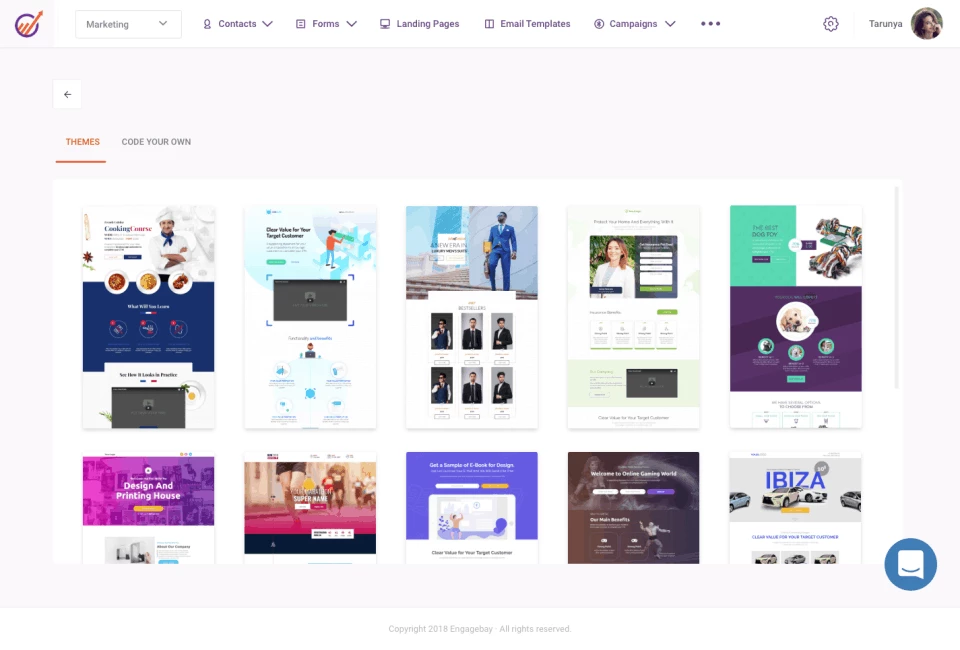
Leverage Social Media Advertising
Social media has certainly changed the game as far as how modern-day marketing works.
But while many small businesses focus their efforts on the free and low-cost marketing opportunities that social media platforms offer, ads have also proven effective to drive ROI.
Unsurprisingly, Facebook dominates in the world of social media advertising, as over 93% of marketers use some form of Facebook ads.
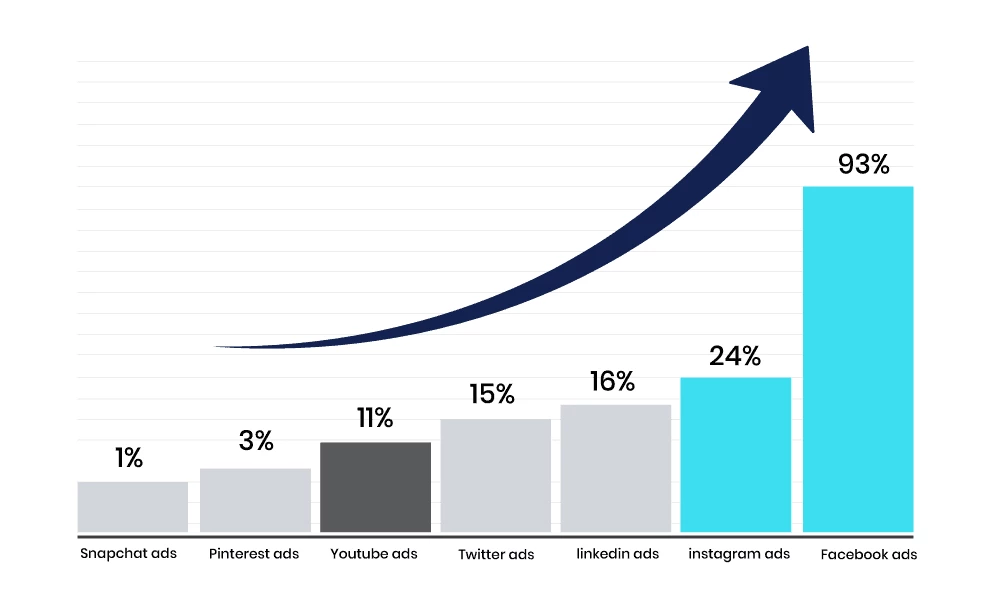
To get the most out of your Facebook ad campaign, there are a few things you’ll want to focus on:
- Ensure that you’re creating an attractive offer
- Track the right KPIs
- Utilize attractive images and/or videos
- Set clear, measurable sales & marketing goals
Or, consider using an ad tool, such as HubSpot’s CRM, to get accurate analytics on your social media ads and determine which ones have the best ROI.
Leverage Google’s Local Offerings
Google has a variety of services that can improve your business, such as Google Adwords, Google Analytics, and now Google My Business.
As a small business, local SEO can make or break your business.
And while determining the driving forces behind which local businesses rank highest in Google is still somewhat of a mystery, the below graphic from Moz breaks it down in an easy-to-understand way:
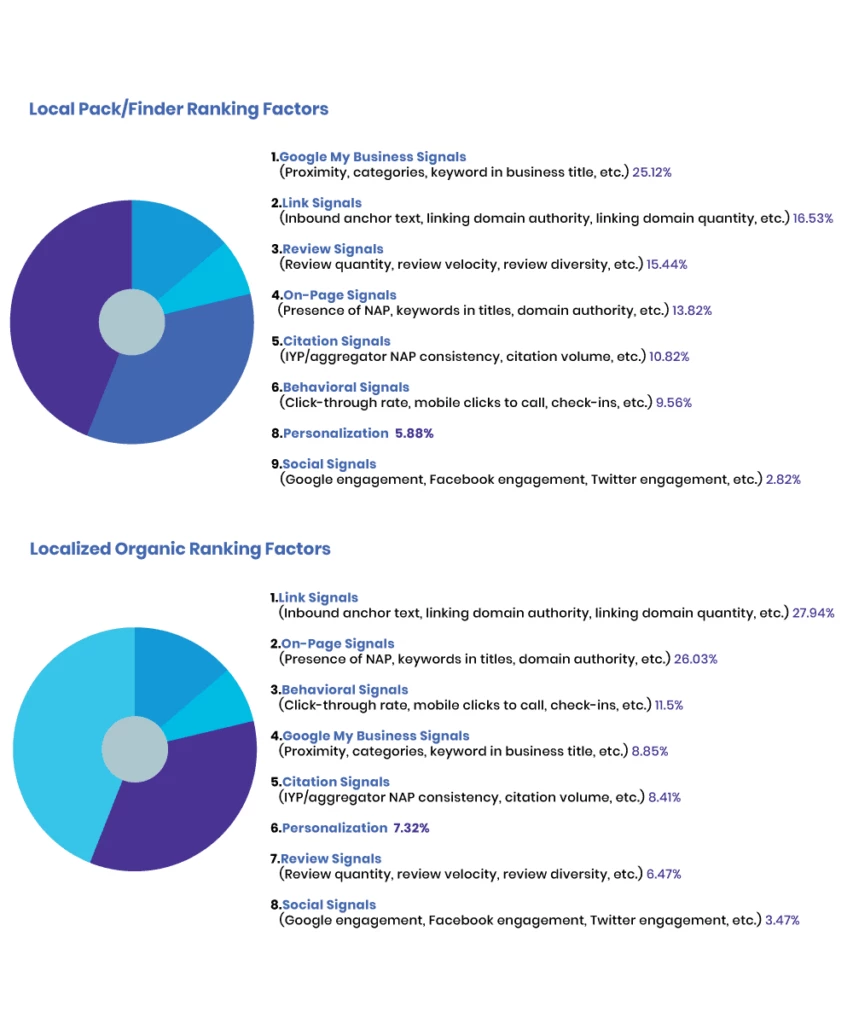
By focusing on optimizing local SEO for the above factors, you can quickly position yourself for success in the SERPs.
Prioritize Retention
It’s hard to debate the importance of customer retention to the long-term success of your small business.
The probability of selling to an existing customer is approximately 65% and that for selling to a new customer is about 10-15%.
To ensure that more of your customers are continuing to purchase from you, growth marketer Sujan Patel recommends that you focus on improving your onboarding process.
To do it, Patel says that you should:
- Establish the point where you’re losing customers and focus your efforts there first
- Define your customers’ definition of success and help them achieve it
- Help your customers achieve quick wins
- Create evergreen resources
Woo Your Audience
Storytelling is a powerful tool for any marketer. It can drive up conversion rates by as much as 400%.
While it can be difficult to measure, there’s little doubt that storytelling can be an effective way to market your business and attract a loyal following.
To do that, Forbes contributor Mike Kappel recommends 5 Essential Tips for Business Storytelling:
- Determine the parameters (who, what, when, where)
- Be completely authentic
- Determine the outcome
- Be consistent
- Allow customers to become part of the story
Explore Partnerships
Exploring and utilizing partnerships with other small businesses can boost the revenue potential of your business exponentially.
As Entrepreneur contributor Web Smith points out:
“You can survive alone, but you’ll only really thrive when you plug into the community around you.”
To develop effective partnerships, Smith recommends that you:
- Be upfront about your business
- Ask the right questions
- Focus on partnership opportunities that can be mutually beneficial
Enable Your Audience to Get to Know, Like and Trust You
Webinars have become a go-to marketing strategy for tech businesses with a good digital presence.
However, small businesses that are not so tech-savvy are missing out.
With webinars being noted as among the top 5 most successful marketing strategies, you need to take advantage of this trend.
Amy Porterfield uses webinars as a critical component to building her customer base. She says webinars help her audience get to know, like, and trust her.
To borrow from Forbes Contributor Ashley Stahl, a webinar host should:
- Focus on creating amazing content
- Choose a time that’s convenient for your target audience
- Prepare, prepare, prepare
Promote a Free Consultation
While it will undoubtedly vary by industry, the conversion rate of offering free consultations makes it one of the most effective small business marketing strategies trending today.
In fact, in some cases, even medical businesses have seen conversion rates as high as 75% when they offer free consultations.
Let’s take a look at a few tips to raise the likelihood of turning a lead into a customer through your free consultation:
- Focus on helping the customer and creating a quick win for them
- Ask targeted questions
- Show them why and how you can help them
The Serial Seller Conclusion
This was a massive blurt of how to set up a marketing plan for your marketing strategies. This should help you identify what can work best for you and your business and one of the biggest issues we hear in the market – “how much should I allocate to sales and marketing?”.
We always recommend looking at Sales and Marketing spending as an ROI perspective. Direct Email generally creates the highest returns for the cost allocated and is a great place to start for all businesses wanting to increase sales.
Something we haven’t explored today is Online Reputation Management. It is becoming one of the most beneficial lead generation strategies through listings and positive reviews. We will write a separate article on this soon.
If you want help with your sales and marketing, book a call with us now.
About us and this blog
We are a Full-Service Sales & Marketing provider that aims to help small to medium businesses increase their leads and sales while helping remove the business owners from their day-to-day activities so they can focus more on the long-term goals of their business.
Book a Meeting with us!
We offer Done-For-You Sales, Sales Coaching, and Advisory as well as Digital Marketing Services. If you want to increase the leads generated for your business and need some guidance and accountability, book a call with us now.
Subscribe to our newsletter!
More from our blog
See all postsRecent Posts
- How to Start Digital Marketing February 18, 2025
- How to Delete a Google Review February 17, 2025
- How to Leave an Anonymous Google Review February 11, 2025

